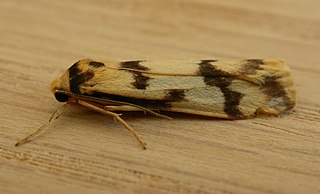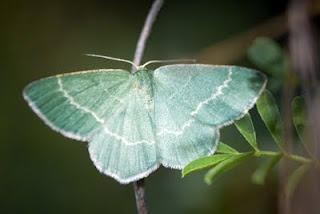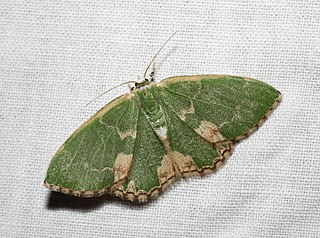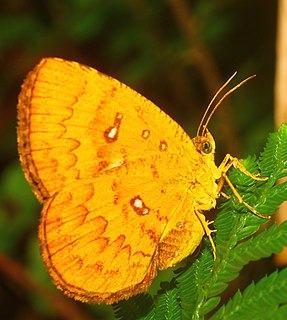
Epicopeiidae is a family of insects in the order Lepidoptera. They are known as oriental swallowtail moths as they closely resemble some oriental swallowtail butterflies. Epicopeiidae have highly varied structure in regards to body size and wing shape. Epicopeiidaen wing patterns are involved in complicated mimicry rings.

Acronicta is a genus of noctuid moths containing about 150 species distributed mainly in the temperate Holarctic, with some in adjacent subtropical regions. The genus was erected by Carl Linnaeus in his 1758 10th edition of Systema Naturae. Caterpillars of most Acronicta species are unmistakable, with brightly colored hairy spikes, and often feed quite visibly on common foliate trees. The hairy spikes may contain poison, which cause itchy, painful, swollen rash in humans on contact. The larva of the smeared dagger moth is unusually hairy even for this genus. Acronicta species are generally known as dagger moths, as most have one or more black dagger-shaped markings on their forewing uppersides. But some species have a conspicuous dark ring marking instead.

Actias is a genus of Saturniid moths, which contains the Asian-American moon moths. Long tails on their hindwings are among their distinctive traits. Other moths with similar appearance are Copiopteryx, Argema and Eudaemonia.

Hypena is a genus of moths in the family Erebidae. It was first described by Franz von Paula Schrank in 1802. These non-migratory moths overwinter as pupae and almost never come to bait as adults.

Cyanopepla is a genus of moths in the subfamily Arctiinae. The genus was erected by James Brackenridge Clemens in 1861.
Episcepsis is a genus of tiger moths in the family Erebidae. The genus was erected by Arthur Gardiner Butler in 1877.

Euchromia is a genus of moths in the subfamily Arctiinae. The genus was erected by Jacob Hübner in 1819.
Hyaleucerea is a genus of moths in the subfamily Arctiinae. The genus was erected by Arthur Gardiner Butler in 1875.
Melanaema is a genus of moths in the family Erebidae erected by Arthur Gardiner Butler in 1877.

Miltochrista is a genus of moths of the family Erebidae, subfamily Arctiinae. The genus was erected by Jacob Hübner in 1819.
Tatargina is a genus of moths in the family Erebidae. The genus was erected by Arthur Gardiner Butler in 1877.

Tigrioides is a genus of moths in the family Erebidae. The genus was erected by Arthur Gardiner Butler in 1877.

Eudocima is a genus of moths of the family Erebidae first described by Gustaf Johan Billberg in 1820.

Chlorissa is a genus of moths in the family Geometridae erected by James Francis Stephens in 1831.

Comibaena is a genus of moths in the family Geometridae. It was described by Jacob Hübner in 1823.

Callidula is a genus of moths of the family Callidulidae.

Dysaethria is a genus of moths in the family Uraniidae. It was described by Turner in 1911. The species of this genus occur mainly in Asia and in Australia.

Rhyparioides metelkana is a moth in the family Erebidae. It was described by Julius Lederer in 1861. It is found in southern and central Europe, Russia, eastern Asia and Japan.
Rhyparioides amurensis is a moth in the family Erebidae. It was described by Otto Vasilievich Bremer in 1861. It is found in the Russian Far East, China, Korea and Japan.














